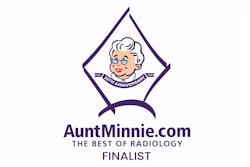Dear AuntMinnie Member,
The use of prostate-specific membrane antigen (PSMA)-PET imaging has increased rapidly in recent years following the U.S. Food and Drug Administration's approval of three radiopharmaceuticals, according to our top story this week.
Although the data confirmed the utility of PSMA-PET staging in patients with high-risk prostate cancer, researchers also noted very low positive rates in patients with intermediate-risk disease.
Our second-most highly viewed article was a column by U.K. radiologist Paul McCoubrie, MBBS, on the challenges that arise with "dysrhythmic" radiologists. Meanwhile, the first of a two-part series by radiologist Joshua Ewell, DO, on AI and the future of radiology also drew considerable interest among AuntMinnie members.
In other popular stories this week, body composition data acquired on routine CT imaging was deemed to be useful for helping clinicians to diagnose, plan treatment, and predict outcomes in patients with metastatic non-small cell lung cancer. Also, a prospective study from Germany reported that AI-supported double reading enabled the detection of most breast cancers without significantly increasing recall rates.
New appropriate use criteria were also published this week for PET imaging of amyloid and tau pathology related to cognitive impairment and Alzheimer’s disease. Produced by the Society of Nuclear Medicine and Molecular Imaging (SNMMI) and the Alzheimer’s Association, the new update is the first revision since initial guidance for amyloid PET was introduced in 2013.
The shortage of radiologic technologists has been a lingering problem in recent years, but help may be on the way. A recent report from the American Society of Radiologic Technologists found a significant increase in the number of students enrolled in radiologic technology education programs.
See the list below for all of our top stories from the week.
- PSMA-PET imaging spiked after FDA approval
- The challenge of dysrythmic radiologists
- The John Henry Generation: The last of the radiologists, Part 1
- CT body composition data proves useful for diagnosing metastatic NSCLC
- AI-supported mammography is safe and effective in real-world settings
- New criteria released for amyloid and tau PET imaging
- ASRT report highlights enrollment growth in technologist programs
- COVID fears led to cancer screening delays among Asian American women
- Study underscores value of radiologist involvement in RT planning
- Rad residents need more orthopedic trauma interpretation training
- DBT on par with mammography for imaging referred women
- Ultrasound ablation is effective for treating hyperparathyroidism
- Breast MRI surveillance reduces disease recurrence
- PET scans can decrease unnecessary lymph node procedures
Erik L. Ridley
Editor in Chief
AuntMinnie.com



















